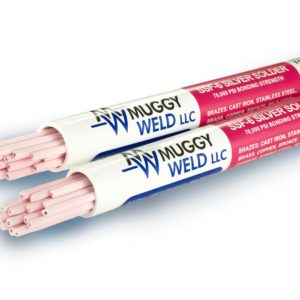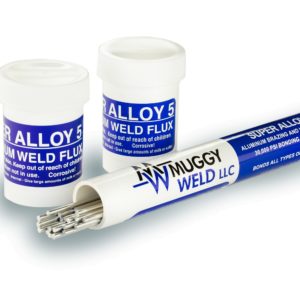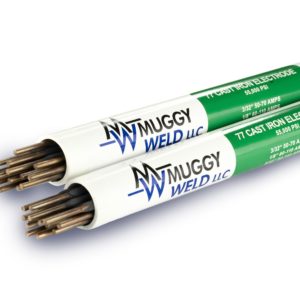Repair Pot Metal Oxidation and Pitting with Super Alloy 1 Pot Metal Solder
If you own a classic car, you’ve undoubtedly noticed some oxidation and pitting in the original pot metal parts. While many plating companies will band-aid the problem by plating over the pits with copper, Super Alloy 1 provides a permanent solution for pot metal pitting.
After removing the oxidation from the part, Super Alloy 1 flows at 350 degrees to fill the pot metal pits–without risk of melting the pot metal part. Muggy Weld realizes the importance of repairing these hard to find classic car parts, and our instructional videos give step by step instructions to DIY and save valuable (sometimes irreplaceable) original pot metal pieces.
Step 1: Use a Dremel tool with a burr tip to remove all the oxidation from each pit. This step is extremely important. All oxidation must be removed from the pot metal within 30 minutes prior to soldering, to ensure proper bonding. Improper pre-cleaning may result in failed bonds.
Step 2: Dip the Super Alloy 1 rod into the flux and pain the flux across the pitted area to be soldered. Notice the honey color of Super Alloy 1’s flux–this is the baseline. Super Alloy 1’s flux is specially formulated to act as a temperature guide, transforming from honey to root beer brown color as the parent metal heats to the proper working temperature. When the parent metal reaches 350°F, the flux will change color, indicating it’s time to apply the filler rod.
Note the technique: indirect heating to avoid overheating the low temperature pot metal. Direct heating may result in burnt, black flux. If this happens, simply remove the flux with warm water and a wire brush and begin again.
Step 3: Gently rub the filler rod over the pits in a tinning fashion, effectively melting the rod and filling the pits. Allow the part to cool naturally, remove the excess flux, chrome plate and reinstall. It’s that simple.
Note: Please observe all AWS Safety & Health Guidelines when using Muggy Weld products.



